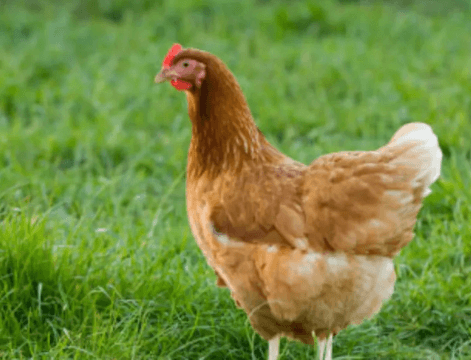1. The characteristics and importance of the liver
Characteristics of chicken liver
1. Chicken liver is a relatively large organ in the organs, accounting for about 2% of the body.
2. The liver is located in the lower part of the chicken’s abdominal cavity, with left and right lobes, the right lobe is larger, and the gallbladder is underneath. The bile duct of the left lobe leads directly to the duodenum, and the bile duct of the right lobe first leads to the gallbladder and then to the duodenum.
3. The liver of newly born chicks is khaki, especially in the first seven days, the liver of adult chickens is generally dark red or brownish red, and is elastic. Of course, the liver of obese chickens contains more fat, which is yellowish brown or khaki.
The role of chicken liver
Metabolic function: Sugar metabolism, protein metabolism, fat metabolism, vitamin metabolism, hormone metabolism
Bile production and excretion
Detoxification function
2. Current high incidence of liver disease
Since the second half of 2019, commercial laying hens in the southwestern region have experienced hepatomegaly, degeneration, bleeding, necrosis and other symptoms.
The age of onset is mostly 70-180 days old, the incidence rate is 1%-15%, and the death rate is 0.5-10%. If there are secondary infections or strong stress factors, the death rate is slightly higher.
Clinical symptoms
1. Acute type
Cockscombs are stunted or shrunk, turn yellow or light, discharge green and loose stools, and die without obvious symptoms.
2. Chronic
In the initial stage, the body weight of the chicken is not up to the standard, the comb is underdeveloped, becomes shallow or shrinks, and discharges yellow and green loose stools. The chicken body is severely thin in the later stage, and the comb is severely atrophy.
Cause analysis
Combined with epidemiology, clinical anatomy and laboratory pathogen detection, the disease is mainly caused by adenovirus, hepatitis E virus, mycotoxins, vibrio hepatitis, etc.
3. Prevention and control measures
1. Adenovirus
The best preventive measure for viral diseases is vaccination, but good biosecurity of chicken farms is also very necessary for the prevention of this disease. Make a new vaccine.
For diseased chickens, Astragalus Polysaccharide Oral Liquid and Liver Gallbladder Granules can be used for treatment, and adenovirus antibody injection can be used.
2. Vibrio hepatitis
Because Campylobacter jejuni is a conditional pathogen in the intestine of chickens, protecting the gastrointestinal tract of the chickens during the breeding process can reduce the incidence of this disease.
①Do a good job in the prevention of gastrointestinal diseases such as coccidia and gastroenteritis during the brooding stage of laying hens.
②Do a good job of cleaning and disinfecting the waterline of the chicken house (1 time per week is recommended for young chickens and laying hens) to avoid intestinal problems caused by excessive bacteria in the waterline. Changleyou and hydrogen persulfate can be used Use potassium alternately for two and a half days each time.
③Onset treatment:
(Young chicken stage)
Compound Amoxicillin + Enrofloxacin + Liver Gallbladder Granules
Doxicycline + Florfenicol + Liver Gallbladder Granules
(Laying hen stage)
Pulsatilla Oral Liquid + Liver Gallbladder Granules + Glucose Oxidase
3. Mycotoxins
① Do a good job in the procurement and storage of feed and raw materials, and avoid purchasing feed and raw materials with excessive mycotoxin content or excessive mycotoxin content due to improper storage of feed and raw materials.
②In the daily feeding process of chickens, it is best to clean the trough at least 2-3 days to avoid excessive accumulation of feed in the trough, which may cause excessive mycotoxins in the feed; the various components of the feeding system The joints should be sealed to avoid moisture and mildew of the feed due to poor sealing.
③ During the brooding stage, it is recommended to add the mold release agent Miweiqing to the feed regularly (it is recommended to add one week every other week).
④Clean the water line, use Changleyou and potassium hydrogen persulfate alternately.
⑤ To protect the liver and kidneys, use liver and gallbladder granules or Yinzhi Jiedu granules regularly.
4. Hepatitis E
① So far, there is no vaccine for hepatitis E HEV. Currently, there is no effective treatment for avian HEV infection. The use of drugs that protect the liver and kidneys and increase immune function will help the recovery of this disease.
② Strict implementation of strict biosecurity measures in chicken farms can limit the spread of the virus. Strictly select the source of chicks to prevent vertical transmission.
③Strengthen feeding management and use high-quality feed.
④Control of immunosuppressive diseases can reduce the infection of poultry HEV.
⑤Gan Dan Granules or Yinzhi Jiedu Granules + Yupingfeng Oral Liquid or Astragalus Polysaccharide
General administration:
Gandan granules or Yinzhi detoxification granules + glucose oxidase + Yupingfeng
In addition, stress factors can also induce the disease. Such as immune stress, transfer group stress, temperature difference stress, etc. Shuanghuanglian can be used for prevention.
In summary, the current liver disease is mainly caused by the above four factors, and stress is the leading cause of this disease. Therefore, it is necessary to focus on and prevent the above four diseases, and at the same time do a good job of feeding management to reduce stress, and do a good job of biosafety protection to reduce and eliminate the occurrence of this disease.
Post time: Nov-03-2020



